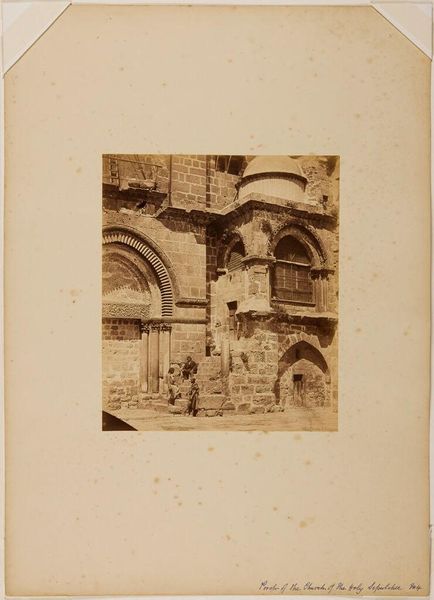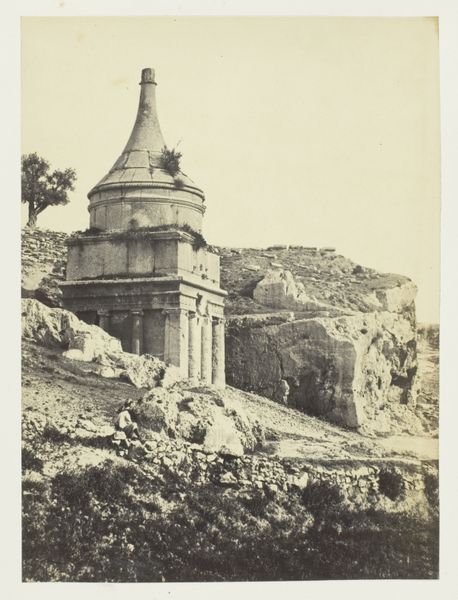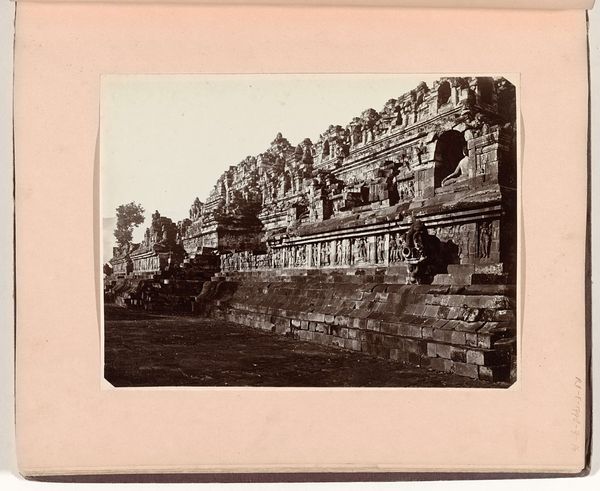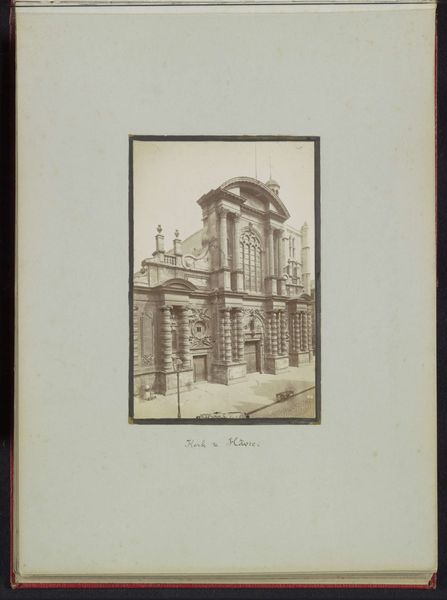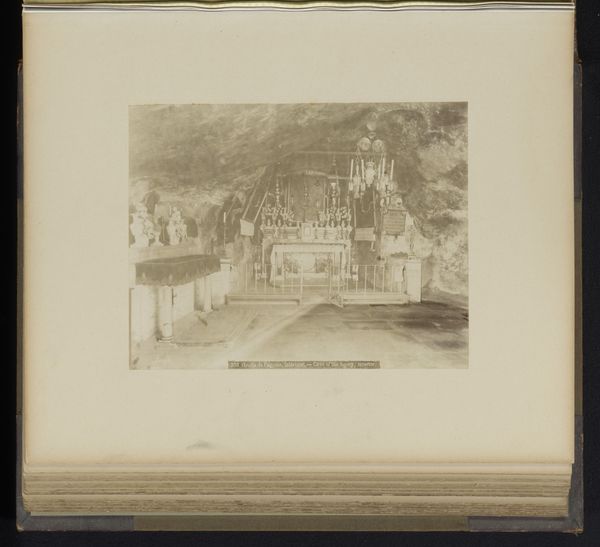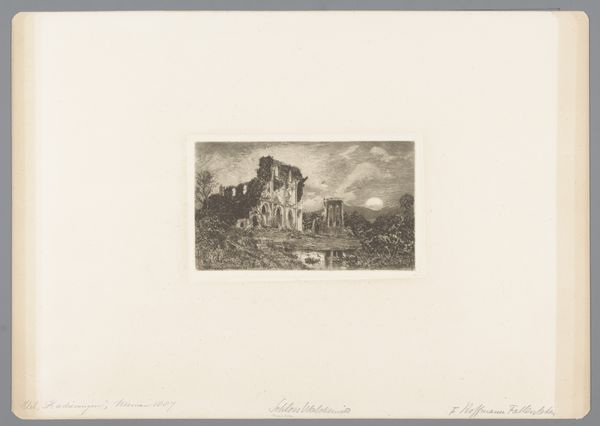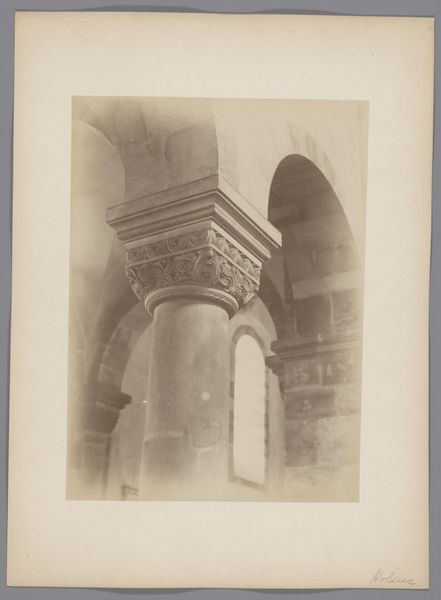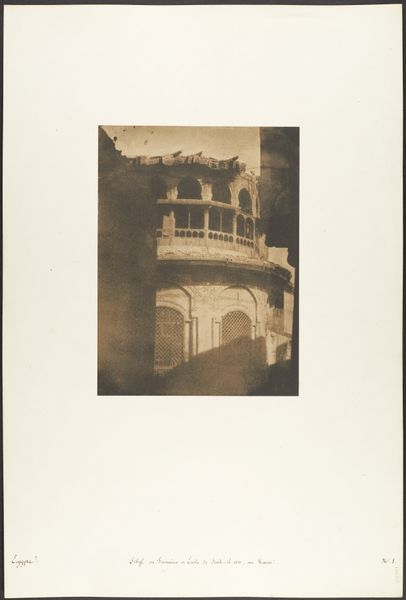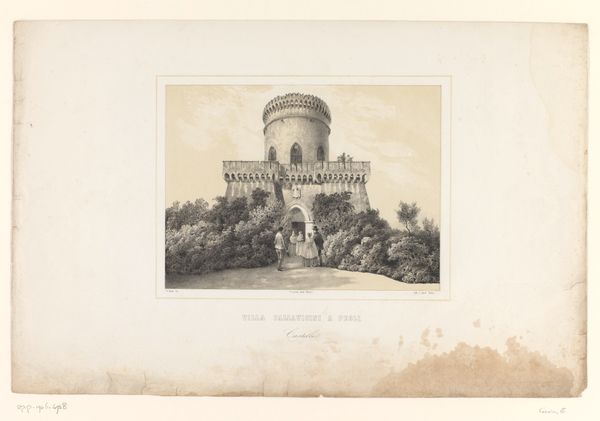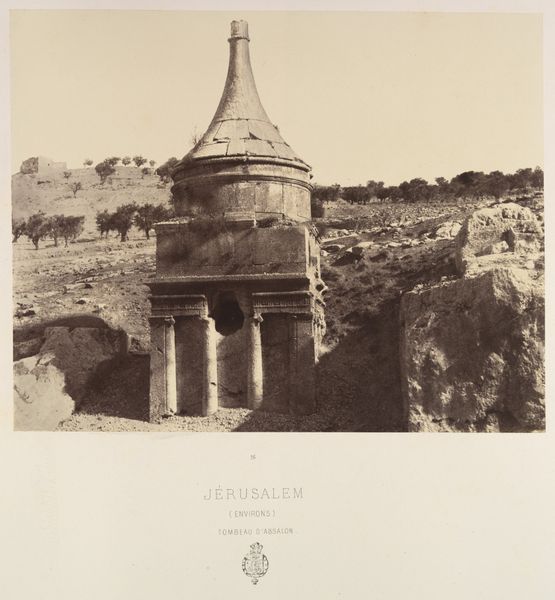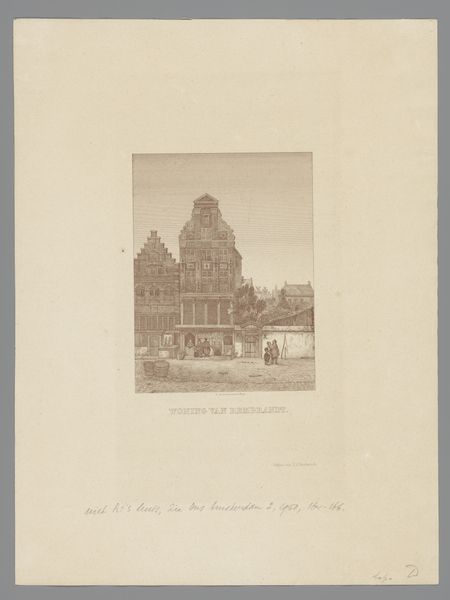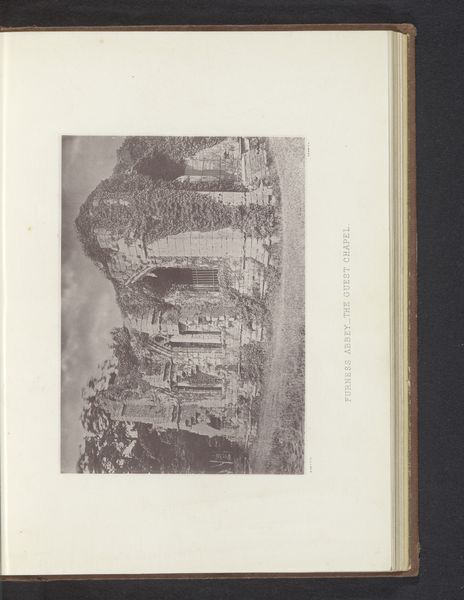
Dimensions: image: 21.6 x 15.5 cm (8 1/2 x 6 1/8 in.)
Copyright: CC0 1.0
Editor: This is Francis Frith’s photograph, "Absalom's Tomb, Jerusalem." The sepia tones give it a sense of antiquity, and the starkness of the tomb against the landscape really emphasizes its isolation. What can you tell me about its significance? Curator: Frith's photograph, taken in the mid-19th century, capitalizes on the West's fascination with the Holy Land. This image, widely distributed, shaped perceptions of Jerusalem as a site of biblical history. Note how the monument is presented against a seemingly barren landscape, reinforcing romantic notions of a timeless, ancient past. Editor: So, it's less about literal accuracy and more about constructing a specific image for its audience? Curator: Precisely. Frith, a commercial photographer, understood the market. His work satisfied a demand for visual documentation of biblical narratives, often simplifying complex cultural realities. What do you think that implies about the politics of imagery at the time? Editor: I see. It wasn't just a picture; it was a statement about power, perspective, and the representation of the "other." Thank you! Curator: Indeed. Thinking about these historical contexts brings new depth to how we look at these images.
Comments
No comments
Be the first to comment and join the conversation on the ultimate creative platform.
